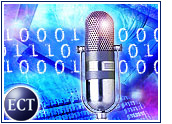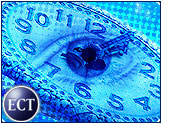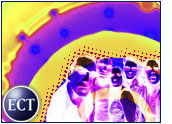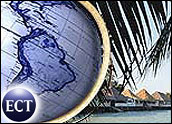
The Interactive Advertising Bureau (IAB) announced voluntary guidelines for advertisers using larger banner ads, pop-ups, and other forms of rich media advertising Monday.
The IAB said the new guidelines would help marketers leverage the unique marketing characteristics of the Internet while keeping their costs in line.
“Part and parcel of all IAB initiatives, these voluntary Rich Media Guidelines are meant to assist publishers, advertisers and their agencies in creating meaningful and effective interactive advertising,” IAB president and chief executive officer Robin Webster said. “These new rich media guidelines encourage adoption of interactivity within the ad units.”
Setting Standards
The IAB’s new guidelines cover standard-sized banner ads, larger interactive marketing unit (IMU) rectangles and skyscrapers, two different sizes of pop-up ads, and transitional ads.
File sizes allowed under the new guidelines range from 15K for a standard banner (468 x 60 pixels) to 100K for a 550 x 550 pixel pop-up ad. The guidelines allow the advertisers to program banner ads to expand and load additional information if users either mouseover or click on the ads.
Standard banners may expand if a user moves a cursor over the ad, but should automatically close when the cursor moves off the banner, the IAB said. Banner ads can also expand if a user clicks on the ad, but must include a clearly labeled close button.
The IAB also advised marketers that online advertisements which have audio or video should include a clearly labeled stop or pause button. Additionally, audio or video is only allowed if consumer clicks on the ad, according to the IAB.
Testing Desired
Marketers should also test ads for stability — defined as not causing error messages, dialog windows, browser crashes, or system crashes — on a variety of browser and platform combinations, the IAB said.
New York City-based IAB suggested that Web sites and networks develop “detailed testing matrices relevant to their specific users” that are publicly available and updated regularly.
Ad vendors are advised to publish detailed matrices “indicating the browser and platform combinations in which their technologies are stable.”
Battling for Bucks
Marketers are under pressure to develop new online advertising formats that capture user attention. A study released last month by the IAB found that larger banner ads are 25 percent more effective in improving key brand metrics, such as brand awareness and message association.
One form of ad that is not impressing users is pop-under advertisements — ads that appear in a separate window on a computer screen, then quickly move to the bottom of the screen. A report released recently by Jupiter Media Metrix found that advertisers who rely too heavily on the ads run the risk of turning off potential buyers.
Internet advertising revenue in the United States was US$8.2 billion last year, but the IAB said the rate of increase is slowing due to an overall slowdown in ad revenue across all media sectors. ![]()

















































I hope the industry responds to your attempts to set reasonable and sane rules. I only wish you had taken it the obvious one step forward: ban the “pop-under” ads. Hopefully, the strong negative reaction these generate will quickly make them obsolete. Are there any stats showing this?